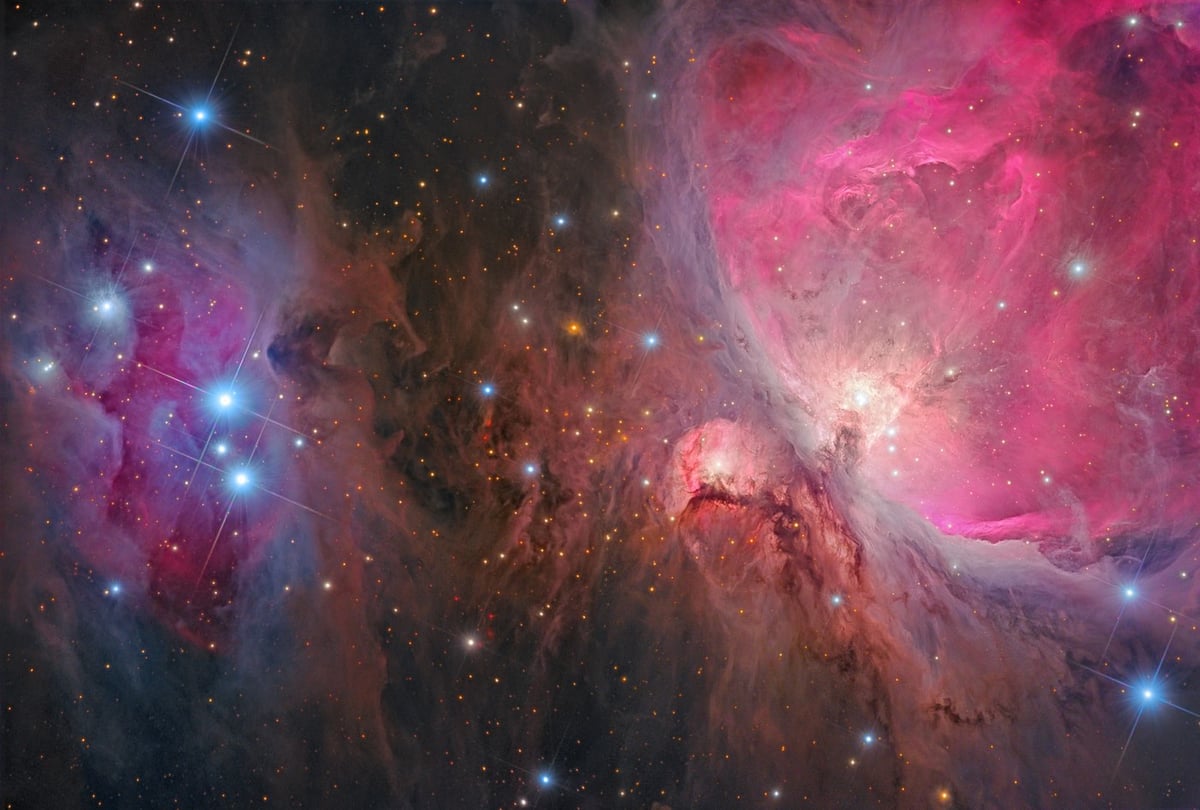The Orion Nebula, our friendly neighborhood star factory

Rolf Olsen recently took this amazing photo of the Orion Nebula using a home-built telescope.
The Orion Nebula is one of the most studied objects in the sky and also has a significant place in the history of astrophotography. In 1880 it was the first ever nebula to be photographed; Henry Draper used the newly invented dry plate process to acquire a 51-minute exposure of the nebula with an 11 inch telescope. Subsequently, in 1883, amateur astronomer Andrew Ainslie Common recorded several exposures up to 60 minutes long with a much larger 36-inch telescope, and showed for the first time that photography could reveal stars and details fainter than those visible to the human eye.
Thanks to Phil Plait for the link…he’s got much more to say about the image and the nebula here.
Also called M42 (the 42nd object in a catalog kept by comet hunter Charles Messier in the late 18th century), it is a sprawling star factory, a gas cloud where stars are born. It’s a couple of dozen light-years across, and sits well over a thousand light-years from Earth. That’s 10,000 trillion kilometers, and you can see it with your naked eye! It’s so bright because of a handful of extremely massive hot stars sit in its center. They blast out ultraviolet light that energizes the gas in the nebula, causing it to glow.
It’s actually a small section of a much larger dark cloud, what’s called a molecular cloud, that we cannot see directly. Stars were born near the edge of that cloud, not too deeply inside it, and when they switched on their fierce light and stellar winds blew a hole in the cloud, popping it like a bubble. The Orion Nebula is a cavity in the side of that cloud, carved by the newborn stars.





Stay Connected